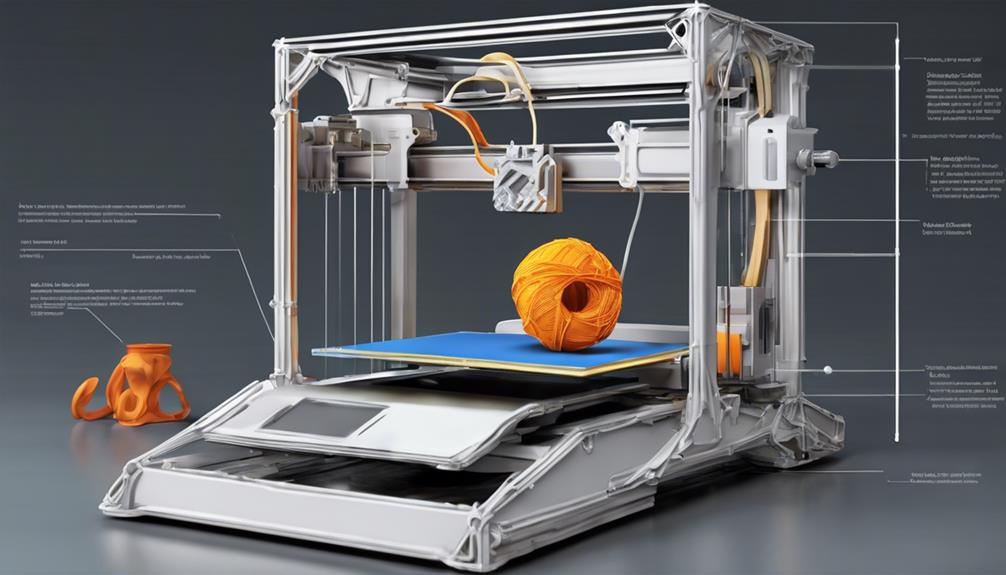3D printers operate on a fascinating principle that merges technology with creativity. The intricate process of layering materials to construct three-dimensional objects raises questions about the precision and intricacies involved. Have you ever wondered how a digital blueprint transforms into a tangible item through the systematic addition of layers? Understanding the underlying mechanisms of 3D printers unveils a world where innovation and engineering converge to redefine traditional manufacturing methods. The journey from a virtual design to a physical object is a blend of science and artistry that continues to captivate minds across various industries.
Key Takeaways
- 3D printers work by layering materials based on digital designs for precise object creation.
- Various printer types like FDM, SLA, and SLS offer distinct advantages in material compatibility and precision.
- FDM melts thermoplastic filaments, SLA solidifies resin with UV lasers, and SLS fuses powdered materials for construction.
- These technologies enable the fabrication of complex objects with high accuracy and detail.
Understanding 3D Printing Basics
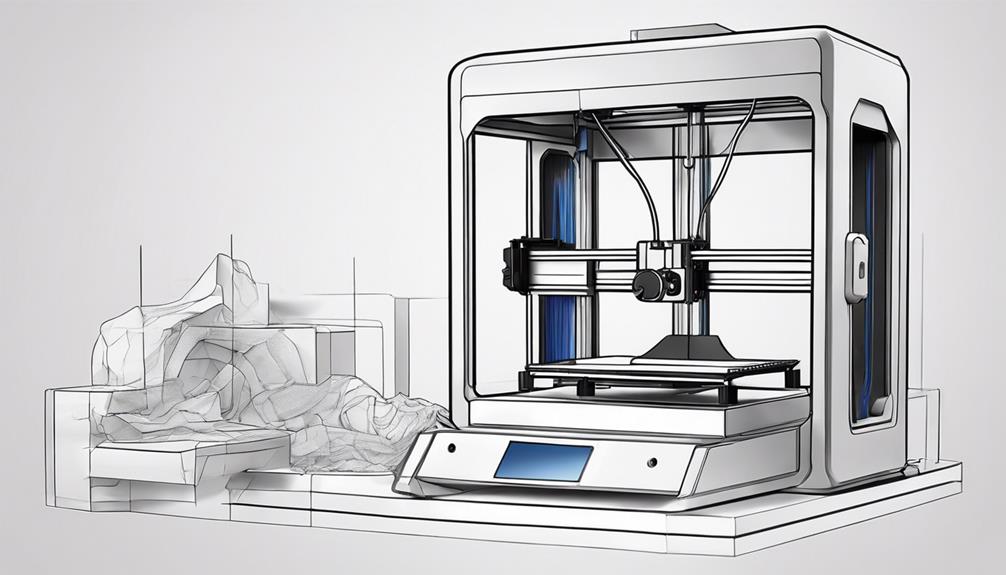
In the realm of additive manufacturing, commonly known as 3D printing, the fundamental process involves the meticulous layer-by-layer construction of physical objects from digital blueprints. 3D printers operate by reading a design file and then depositing materials, such as plastics, metals, or resins, layer by layer to create a tangible object. Each layer is precisely placed and fused together to form a coherent 3D structure. The ability to work with various materials grants 3D printers versatility in producing a wide array of objects with different properties and characteristics. By carefully following the digital design, these printers ensure that the final object matches the intended specifications with high accuracy and detail. Understanding the intricate process of how printers create objects through the strategic layering of materials provides insight into the capabilities and potential applications of 3D printing technology.
Types of 3D Printers
Various types of 3D printers, such as Fused Deposition Modeling, Stereolithography, and Selective Laser Sintering, employ distinct approaches to material deposition and curing processes. Each method offers unique advantages in terms of material compatibility, speed, surface finish, and precision. Understanding these different types of 3D printers is crucial for selecting the most suitable technology for specific applications.
Fused Deposition Modeling
Utilizing the principle of additive manufacturing, Fused Deposition Modeling (FDM) printers operate by melting and extruding thermoplastic filament through a nozzle to construct objects layer by layer. These printers are notable for their affordability, ease of use, and availability in the consumer market. FDM technology offers a diverse selection of thermoplastic materials like PLA, ABS, PETG, and TPU, catering to a wide range of project requirements. Objects created with FDM may exhibit visible seams or layer lines due to the layer-by-layer construction process. However, these imperfections can be minimized through various post-processing techniques. FDM printing enables the production of intricate geometries and internal structures, making it a versatile choice for many applications.
Stereolithography
Stereolithography, a leading technology in the realm of 3D printing, encompasses a range of printers that utilize an ultraviolet (UV) laser to solidify layers of liquid resin. These SLA printers are renowned for their high resolution capabilities, with layer thickness as low as 25 microns, enabling the creation of intricate designs and smooth surfaces. The objects produced by SLA printers exhibit exceptional surface finish and accuracy, making them highly sought after for prototyping purposes. Industries such as dentistry, engineering, and product design leverage SLA technology for producing high-quality functional prototypes. Additionally, SLA printers are prized for their speed and ability to fabricate complex geometries, making them a versatile choice for various applications.
Selective Laser Sintering
Selective Laser Sintering (SLS) stands as a prominent type of 3D printing technology that employs a high-powered laser to fuse powdered materials together, enabling the fabrication of complex and durable objects layer by layer. SLS printers excel in selective laser sintering powdered materials with high precision, allowing for the creation of intricate geometries and functional prototypes. The material versatility of SLS is noteworthy, as it can work with materials like nylon, thermoplastic elastomers, and metals, catering to industries such as aerospace, automotive, and healthcare. This technology is favored for rapid prototyping and manufacturing due to its ability to produce parts with high mechanical properties efficiently.
| Features | Description |
|---|---|
| High Precision | SLS printers offer precision in selectively sintering powdered materials. |
| Material Versatility | Capable of working with various materials including nylon, metals, etc. |
| Layer by Layer Process | Objects are fabricated by fusing powdered materials layer by layer. |
Importance of 3D Printing Technology
Why has 3D printing technology become indispensable in modern manufacturing processes across diverse industries? 3D printing, also known as additive manufacturing, offers a range of benefits that make it a crucial tool in today's manufacturing landscape. One key advantage is rapid prototyping, which significantly reduces product development time, allowing companies to bring products to market faster and more efficiently. Additionally, 3D printing enables on-demand production, eliminating the need for costly inventory storage and reducing waste. The technology's design flexibility is another critical factor, as it allows for the creation of complex geometries and intricate structures that would be challenging or impossible to achieve with traditional manufacturing methods. Moreover, 3D printing is cost-effective, offering companies the potential to save billions in production costs while streamlining manufacturing processes. Lastly, the ability to achieve customized manufacturing through 3D printing makes it an invaluable tool for industries such as aerospace, automotive, and healthcare, where personalized products are increasingly in demand.
3D Printing Materials
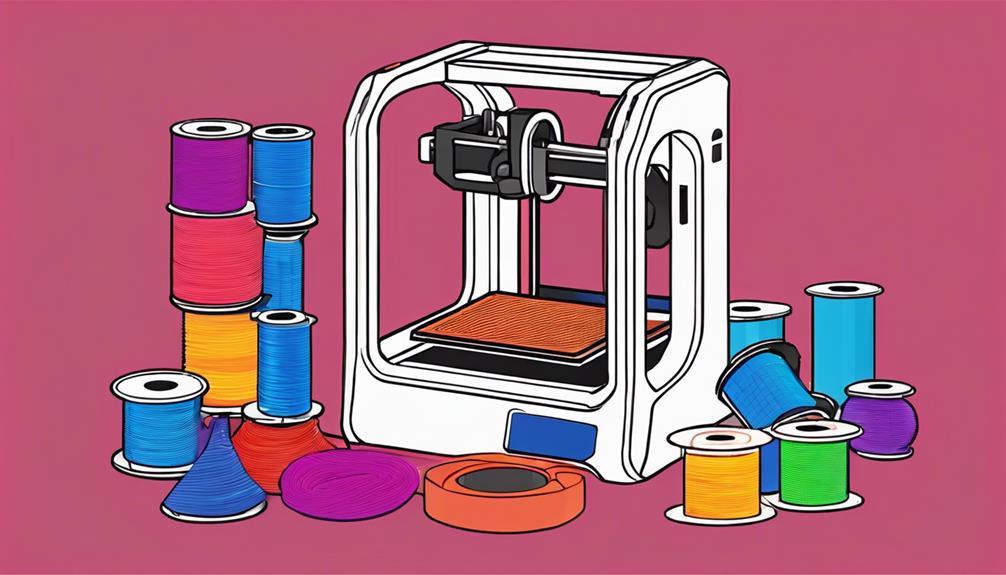
The selection of diverse 3D printing materials plays a critical role in enabling a wide range of applications across various industries. These materials offer unique properties that cater to specific needs, from strength and durability to conductivity and aesthetics.
- Plastics, such as ABS (Acrylonitrile Butadiene Styrene), are commonly used for their strength and durability in 3D printing, making them suitable for a wide range of applications.
- Metals and ceramics provide options for producing strong and heat-resistant parts, expanding the possibilities for applications in industries like aerospace and healthcare.
- Specialized filaments like carbon fiber and conductive filaments offer properties such as lightweight strength and electrical conductivity, opening doors for creating high-performance components within 3D printed objects.
3D Modeling Software
Utilizing sophisticated 3D modeling software is essential in the process of creating intricate digital designs for objects that are intended for fabrication through 3D printing technology. CAD software and 3D modeling programs enable users to manipulate shapes, sizes, and dimensions, allowing for the creation of detailed and complex models. These software tools facilitate the design creation process by offering features to import existing designs, create new ones from scratch, or modify existing designs. Designs crafted in 3D modeling software are then converted into printable digital files, typically in STL or OBJ formats. These files contain crucial information about the object's geometry, ensuring accurate reproduction during the 3D printing process. Popular 3D modeling software options such as Autodesk Fusion 360, Tinkercad, SolidWorks, and Blender provide varying capabilities and tools to cater to different design requirements, empowering users to bring their creative visions to life in the realm of additive manufacturing.
Slicing and Preparing the Model
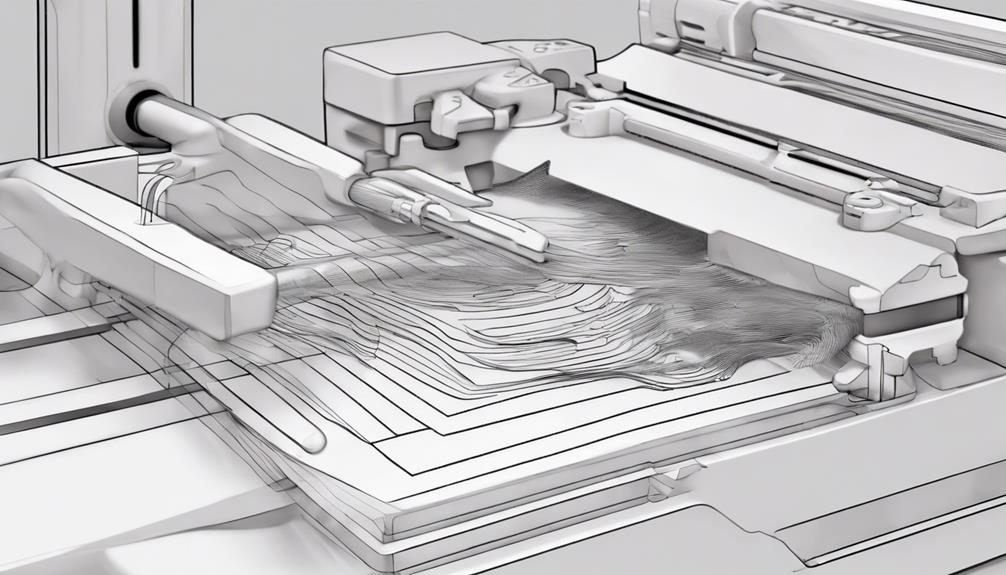
Slicing the model plays a crucial role in the 3D printing process by breaking it down into manageable layers. This step guides the printer on how to construct the object with precision and accuracy. What are the specific model preparation steps involved in this intricate process?
Model Slicing Process
In the process of preparing a 3D model for printing, the division of the model into thin horizontal layers is a critical step that significantly influences the final quality and accuracy of the printed object. Model slicing involves using specialized slicing software to divide the 3D model layer by layer, ensuring precise reproduction during the printing process. This meticulous process not only determines the resolution and quality of the printed object but also plays a vital role in optimizing material usage. By converting each layer into instructions for the printer, model slicing guarantees that the material is deposited accurately, resulting in a faithful recreation of the original 3D model.
Model Preparation Steps
Breaking down a three-dimensional model into layers is a fundamental step in the meticulous process of preparing a model for 3D printing. Slicing software plays a crucial role in this process by converting each layer into precise instructions for the printer to deposit material accurately. Model preparation encompasses adjusting settings such as layer height and infill density to achieve the desired print quality. Additionally, support structures may be incorporated to ensure that overhanging parts are correctly printed and maintained during the printing process. Efficient model preparation is essential for successful 3D printing, as it guarantees the accurate, detailed, and stable fabrication of the desired object.
The 3D Printing Process
How does the layering process in 3D printing enable the creation of intricate and complex shapes from digital design files? 3D printing operates by constructing objects layer by layer, allowing for the production of solid, three-dimensional objects. This methodology, known as additive manufacturing, is pivotal in various industries due to its ability to manufacture highly detailed structures efficiently. The process involves the utilization of different types of 3D printing technologies, such as Fused Deposition Modeling (FDM) and Stereolithography (SLA), each with its unique approach to creating layers.
- FDM printers work by heating a thermoplastic filament and extruding it onto a build platform layer by layer.
- SLA printers use a laser to solidify layers of resin to create the desired object.
- The layering process in 3D printing allows for intricate geometries and customized designs that traditional manufacturing methods struggle to achieve.
This innovative manufacturing process has significantly impacted prototyping, customization, and production across diverse fields.
Cost of 3D Printers
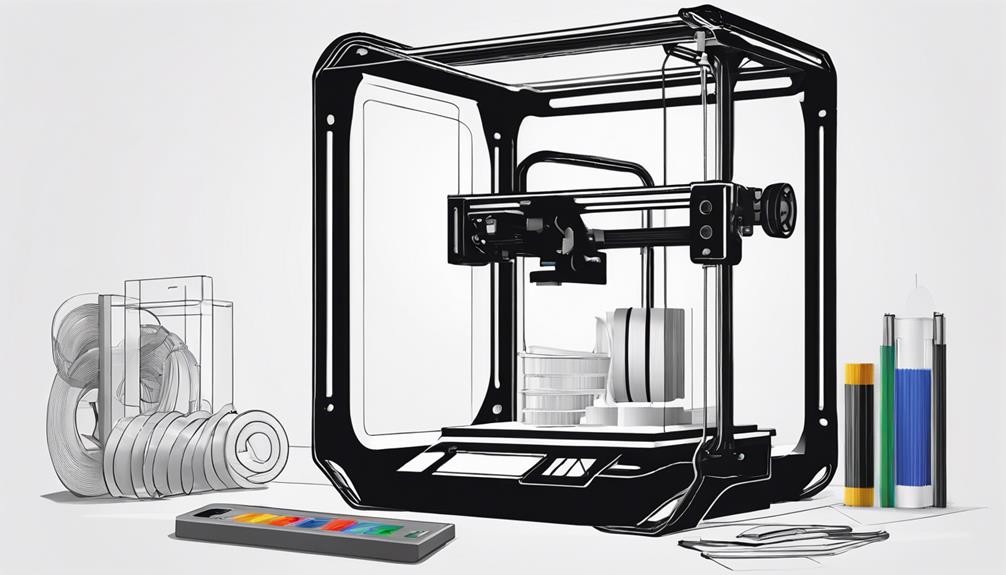
The pricing structure of 3D printers varies significantly based on their specifications and intended applications. Entry-level 3D printers can be found for as low as $200 to $300, making them affordable for hobbyists and beginners. On the other end of the spectrum, high-end industrial 3D printers can range from $10,000 to over $100,000, depending on the size and capabilities required. Various factors influence the cost of 3D printers, including printing speed, resolution, build volume, and material compatibility. Additionally, maintenance costs for 3D printers typically involve filament replacement, nozzle cleaning, and occasional upgrades or repairs. It's also important to consider operational costs such as software expenses, additional accessories, and ongoing maintenance when calculating the total cost of owning a 3D printer.
| Cost Factors | Description |
|---|---|
| Printing Speed | Determines how quickly the printer can produce objects. |
| Resolution | Refers to the level of detail and quality in the printed objects. |
| Build Volume | The maximum size of objects that can be printed by the 3D printer. |
Various 3D Printing Techniques
Different 3D printing techniques employ distinct methods to create intricate and durable objects with varying material properties.
- Stereolithography (SLA): Utilizes a UV laser to cure layers of resin, producing smooth and detailed objects.
- Selective Laser Sintering (SLS): Fuses powdered materials like nylon or metal using a laser, resulting in strong and durable parts.
- Fused Deposition Modeling (FDM): Heats and extrudes thermoplastic filaments, making it suitable for quick prototyping and functional parts.
These techniques, including Digital Light Processing (DLP), offer unique advantages in terms of materials, finishes, and applications within the realm of 3D printing. SLA provides high precision, SLS offers strength, FDM enables rapid prototyping, and DLP allows for fast printing speeds and detailed outcomes. Understanding the differences in these 3D printing methods is crucial for selecting the most suitable technique based on the desired material properties and applications.
Applications of 3D Printing
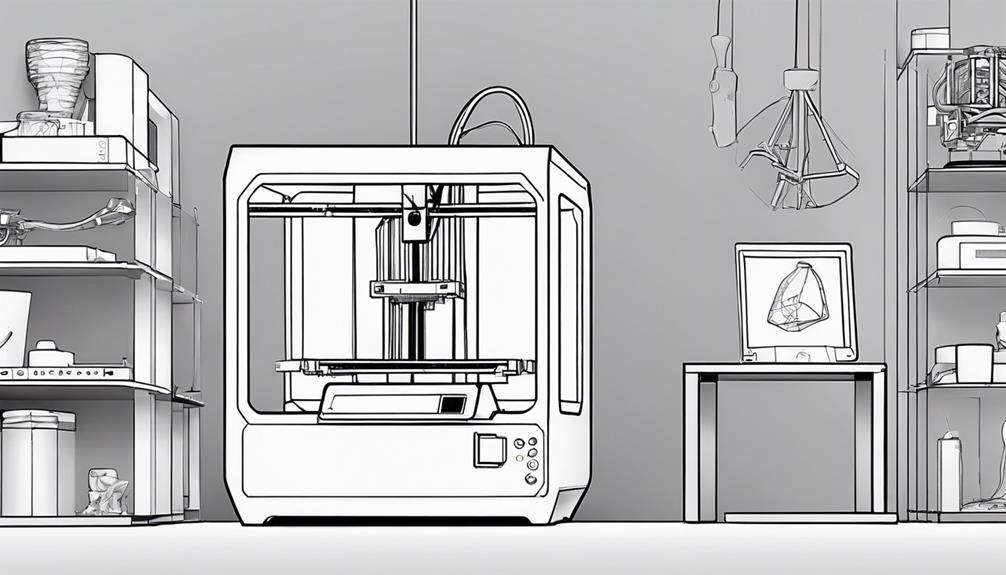
Exploring the multifaceted applications of 3D printing reveals its transformative impact across diverse industries and disciplines. One prominent application is rapid prototyping, where 3D printing plays a crucial role in accelerating the development process while saving significant time and costs. This technology enables the creation of highly customizable objects without the need for additional support structures, offering designers unprecedented freedom in their creations. Moreover, the wide range of materials that can be utilized in 3D printing, including nylon, glass, ceramic, aluminum, and steel, further expands its capabilities and applications.
Initially used to replace hand-made models, 3D printing has now permeated various sectors, particularly manufacturing industries. Its versatile applications have revolutionized traditional manufacturing processes by streamlining production, reducing waste, and enabling the fabrication of complex geometries that were previously unattainable. As a result, 3D printing continues to drive innovation and efficiency across different fields, showcasing its immense potential for the future.
Advantages of 3D Printing
Harnessing the capabilities of additive manufacturing, what distinct advantages does 3D printing offer in modern production processes? 3D printing presents several key advantages that set it apart from traditional manufacturing methods:
- Rapid Development: Some 3D printers can fabricate objects in a fraction of the time taken by conventional methods, enabling swift prototyping and production processes.
- Customization: One of the hallmark advantages of 3D printing is its ability to tailor designs to specific needs, allowing for the creation of personalized and unique objects.
- Material Wastage Reduction: Compared to traditional manufacturing techniques that often result in significant material wastage, 3D printing is more efficient, utilizing only the necessary materials for the object being created.
These advantages highlight the versatility and efficiency of 3D printing, making it a valuable tool for industries and individuals looking to streamline production processes and achieve intricate designs that were once considered unattainable.
Disadvantages of 3D Printing
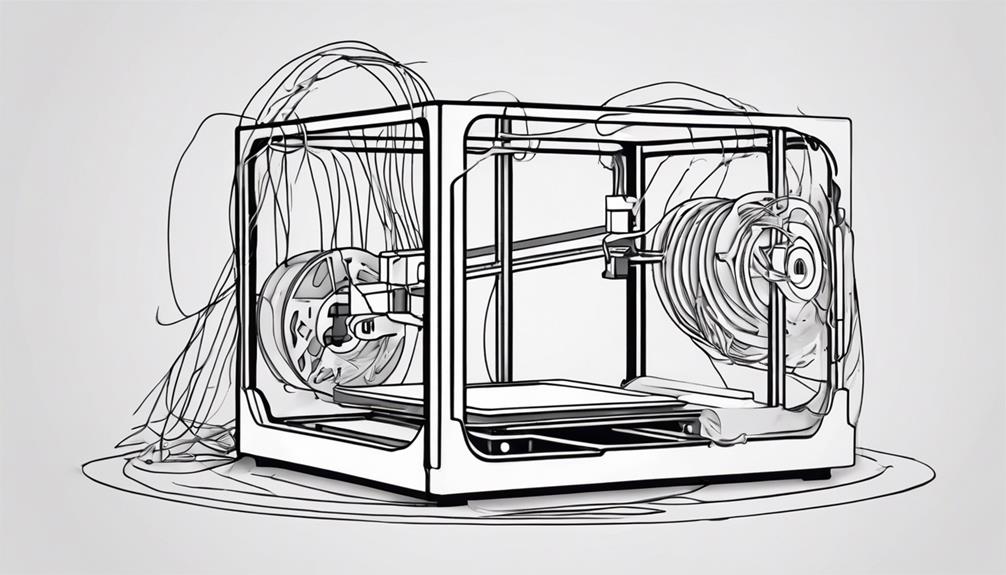
In the realm of additive manufacturing, it is imperative to acknowledge the inherent limitations and challenges associated with 3D printing technology. One significant disadvantage of 3D printing is the limited material options available, which restrict the variety of finishes and properties that can be achieved in printed objects. Additionally, the low production volume capabilities of 3D printing may not be suitable for large-scale manufacturing needs, making it less efficient for mass production. Surface quality is another issue, as layer lines and rough textures are common, often necessitating post-processing such as sanding, painting, or smoothing to improve the final appearance of the printed item. Moreover, equipment limitations, including constraints in build size, speed, and material compatibility, can impact the overall efficiency and versatility of 3D printing processes. These drawbacks highlight the challenges and constraints that need to be considered when utilizing this technology.
Future Trends in 3D Printing
Given the projected growth and advancements in 3D printing technology, what emerging trends are shaping the future of additive manufacturing? The future of 3D printing is taking shape with several key trends influencing the form and process of this innovative manufacturing technology:
- New Materials: The development of novel materials compatible with 3D printers is expanding the possibilities for manufacturing, enabling the creation of more complex and functional products.
- Enhanced Speed and Precision: Continuous improvements in printer technology are leading to faster printing speeds and higher levels of precision, revolutionizing the manufacturing process.
- Integration of AI and Automation: The integration of artificial intelligence and automation is streamlining the 3D printing workflow, making it more efficient and cost-effective for various industries.
These trends are driving the evolution of 3D printing, paving the way for a future where customization, speed, and innovation are at the forefront of manufacturing processes.
Examples of 3D Printing Uses
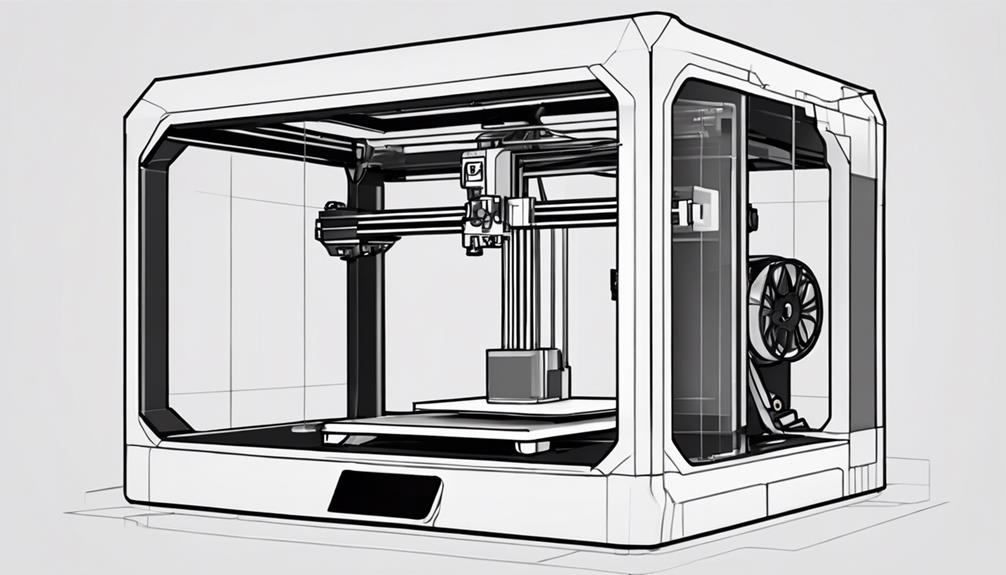
The diverse applications of 3D printing span various industries, showcasing its profound impact on manufacturing processes. From crafting intricate aerospace components to producing customized medical implants, the versatility of this technology is evident. Exploring these examples sheds light on the innovative solutions that additive manufacturing offers.
Diverse 3D Printing Applications
Exploring the extensive capabilities of 3D printing unveils a myriad of diverse applications across industries, showcasing the transformative potential of additive manufacturing technology.
- Aerospace industry utilizes 3D printing for creating rocket fuselages, aircraft components, and parts meeting industry standards.
- Medical field benefits from personalized prosthetics, surgical guides, implants, and orthotic insoles produced through 3D printing.
- Metal 3D printing plays a critical role in aerospace innovation, with examples like Relativity Space using it for manufacturing rocket parts.
These applications highlight the versatility and precision of 3D printing in addressing unique challenges in aerospace, medical, and various other industries, pushing the boundaries of traditional manufacturing techniques.
Impact on Industries
Unveiling the profound impact of 3D printing on various industries reveals a landscape of innovative applications reshaping manufacturing processes and product development. In the field of dentistry, 3D printing allows for the production of custom dental implants, crowns, and bridges with unparalleled precision and efficiency. The aerospace industry benefits from 3D printing by manufacturing complex components such as jet engine parts, brackets, and lightweight structures, ultimately enhancing performance. Similarly, the fashion industry leverages 3D printing to create unique and intricate clothing, accessories, and footwear, pushing the boundaries of design and materials. Overall, 3D printing is revolutionizing industries by enabling customized solutions, streamlining production processes, and fostering creativity in product development.
Impact of 3D Printing on Industries
Remarkably, the widespread adoption of 3D printing technology has significantly reshaped multiple industries by facilitating rapid prototyping, cost-effective manufacturing, and the customization of functional parts and tools.
- The aerospace industry heavily relies on 3D printing for rapid prototyping and the production of components such as rocket parts and aircraft structures.
- Dentistry has embraced 3D printing for creating personalized dental implants, crowns, and surgical guides, revolutionizing the field with tailored solutions.
- In the automotive sector, 3D printing is utilized for design, production, and customization of specific components, reducing the inventory requirements for spare parts and enabling on-demand manufacturing.
Industries like dentistry and space exploration have harnessed the power of 3D printing to produce intricate prototypes and finished products with precision and efficiency. This transformative technology not only streamlines manufacturing processes but also opens up new possibilities for innovation across various sectors.
Frequently Asked Questions
How Does 3D Printing Work Exactly?
In understanding the printing process of 3D printers, it is vital to acknowledge their operation layer by layer and the material usage involved. Design software guides the precise deposition of materials during the construction of objects. Factors such as printing speed contribute to the efficiency of the process. Post-processing steps may be necessary to refine the final product. These elements collectively contribute to the intricate and precise nature of 3D printing technology.
How Do 3D Printers Work Step by Step?
The printing process in 3D printers unfolds systematically, beginning with the digital design's slicing into layers. These layers are successively formed by extruding materials like plastic or metal. A critical aspect is the precise heating mechanism used to fuse layers together seamlessly. Software control ensures accurate dimensions and intricate details. Consequently, the printing speed varies depending on the complexity of the object being created. Such meticulous layer formation showcases the technology's versatility and precision.
Can 3D Printers Print Anything?
3D printers have limitations in terms of the materials they can print, typically plastics, metals, ceramics, and bio-materials. The printable designs are subject to size constraints, restricting the dimensions of objects produced. Post-processing techniques may be required to refine the final product. Printing speed varies based on complexity. Quality control measures are essential to ensure accuracy and structural integrity. Understanding these aspects is crucial for maximizing the utility of 3D printers.
Is It Expensive to 3D Print?
In the realm of 3D printing, the landscape of cost comparison unveils a tapestry of nuances. Material expenses, budget-friendly options, price variations, and affordable alternatives dance in a delicate balance. Exploring the realm of cost-effective solutions, one finds that while initial investments may seem daunting, the potential savings in prototyping, customization, and small-scale production scenarios render 3D printing a compelling choice for those seeking innovative and tailored manufacturing solutions.
Conclusion
In conclusion, 3D printing technology revolutionizes manufacturing processes by offering efficient production methods and customization capabilities. The intricate layer-by-layer construction of objects using various materials showcases the versatility of this innovative technology. As industries continue to adopt 3D printing for prototyping, medical applications, and other uses, the future trends in this field are promising. The impact of 3D printing on industries is akin to a ripple effect, permeating through various sectors and transforming the way products are created and designed.
